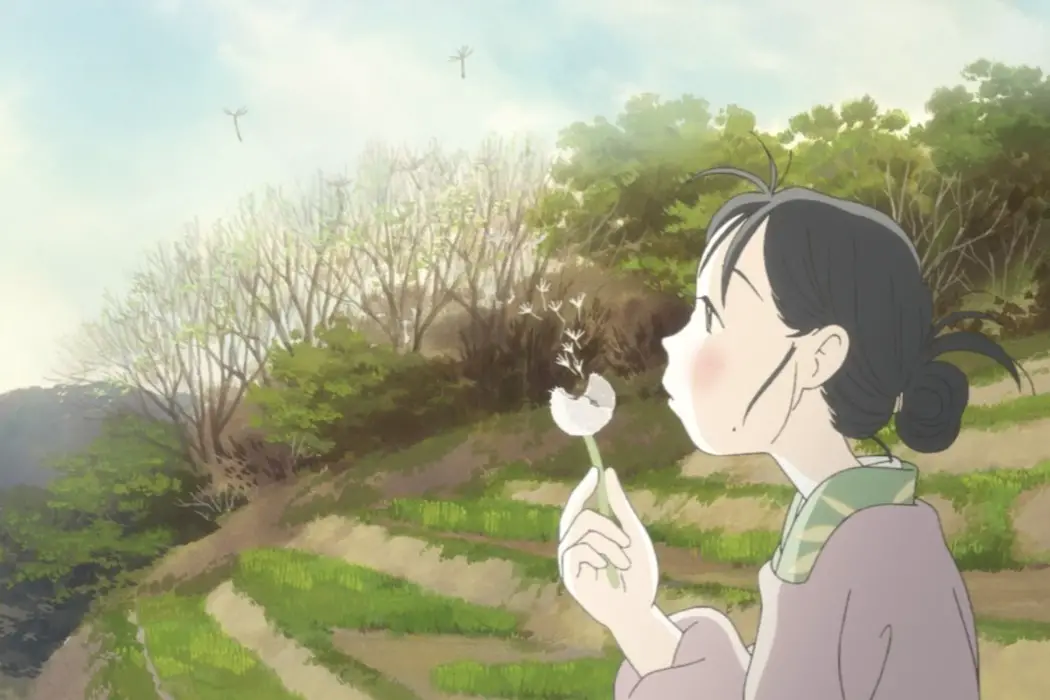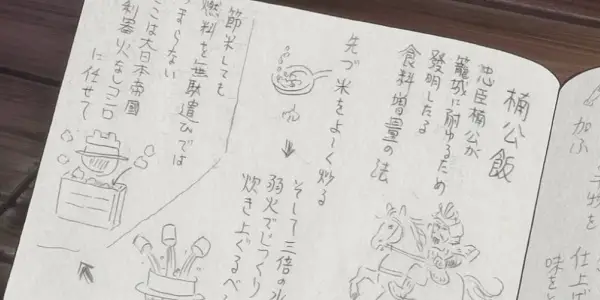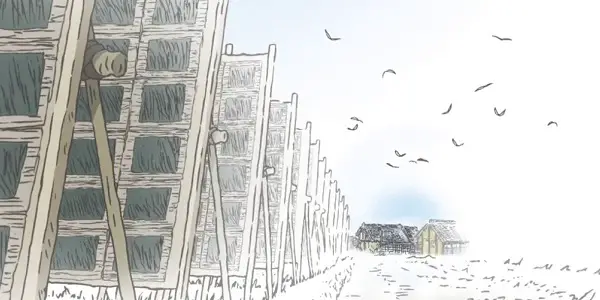IN THIS CORNER OF THE WORLD: A Sketch Of Sadness

Ben is a former student of cognitive science who is…
Many of the great filmic tragedies – tragedies in general, really – focus on the remarkable. A person of incredible influence destroys themselves; an attempt to achieve something great falls flat on its face; an ordinary person is saddled with a severe burden. Tragedy consists of remarkable events that are horrifying on their face. Events like this take place in In This Corner of the World, but what makes them tragic is not just how immediately horrifying they are. When something remarkable and life-altering takes place, we spend a lot of time watching the characters adjust to their new normal.
In this film, tragedy isn’t an event, but something that drains the good out of the unremarkable parts of life. In This Corner of the World supposes that some people can find a measure of contentment in what is routine and commonplace to them. It’s part of how they enjoy their lives, but as the years pass, we see war diminish both the amount of good available to them and their ability to find it.
Director Sunao Katabuchi said he liked the main character of In This Corner of the World for her imagination, but even that imagination isn’t the film’s central concern. It’s one of several ways in which the main character finds her satisfaction. She amuses herself by drawing things she encounters, sometimes with small artistic embellishments; but over the course of the film, both the images that inspire her and her ability to draw are changed and wounded.
Corroding Conditions
In This Corner of the World follows Suzu Urano from her childhood in Hiroshima to her early adult life in Kure, where she moves in with her husband’s family and changes her name to Suzu Hojo. It takes place over many years across the 1930s and 40s, with the second half of the film focusing on World War II. This time is divided into segments, but the segments are uneven, both in their length and how much time passes between each segment. This unevenness can feel strange, even graceless sometimes, but its effect doesn’t detract much from the film overall.
It offers us some perspective on the film’s events. Everything passes eventually, memorable periods of life aren’t evenly distributed across time, and even memorable periods of life are composed mostly of unremarkable moments. It takes an hour before tragedy begins to unfold, as if to make sure we understand the way Suzu remained content before then. Her life depicted in the film’s first hour has its ups and downs, of course, but her ability to handle it doesn’t start to falter until the onset of World War II.

The war inflicts direct violence on Suzu’s family and community, but the way the film proceeds sheds light on the most general ways it affects them. The film depicts air raids as specific events which cause specific problems, but also as a condition of life where Suzu lives. Across the months and years the movie spans, air raids occur at many points, imposing an uncontrollable and persistent burden on the characters’ lives. In this respect, they resemble the thunderstorm Suzu describes to her niece in one of the film’s earlier scenes. But a person can get used to the persistence of thunderstorms and still sustain their life; the burden imposed by war is much heavier. In This Corner of the World maintains that there’s a breaking point.
We see this breaking point after one of the most devastating events in Suzu’s life: the film makes a drastic stylistic departure and ceases to resemble reality for a few minutes (it’s hard to describe, but think of Norman McLaren‘s avant-garde work). Eventually we come back to reality – it’s possible to come back from the breaking point – but the world has changed. The influence of this event hovers over later parts of the movie, in more ways than one.
Marine Rabbits
Early in the film, when Suzu is still a child, a boy in her class asks her to paint a picture for him. She paints a picture of him standing in front of the ocean; on the ocean are rabbits hopping toward the shore. She says it’s how she sees cresting waves: their foamy white tips look like rabbits. She keeps up her practice of drawing and painting into adulthood, though it becomes less significant after she takes on household responsibilities.

But even though she doesn’t paint as much, we still see her painting. Some scenes are rendered as paintings in her style, or even as paintings in progress, where paint splatters or smears across the frame as she watches something unfold. Suzu is a very reserved character, but scenes like this, as well as some of her scattered behaviors and narration, reveal the gears turning in her head, and how attentive she is to her own interactions with the world around her.
Hideaki Anno (director of Shin Godzilla) disliked In This Corner of the World because he felt that Suzu lacked proactivity. This is an understandable impression, but not quite accurate. It’s true that we see Suzu do little besides mundane tasks, and sometimes even seems complacent. But she only superficially appears complacent. When she gets a moment to herself she seems content, and to be content while being as attentive to the world as Suzu is necessitates a degree of proactivity.
To Conclude: In This Corner of the World
In This Corner of the World will probably hold up well for viewers who find themselves drawn to understand Suzu’s disposition. Some might find themselves alienated by its awkward chronology or the aforementioned appearance of inactivity. While I would maintain that the latter proves to be only a superficial appearance under scrutiny, it still feels a certain way to watch this film, and not everyone is going to like that feeling.
Nevertheless, it’s interesting to see a movie composed mostly of unremarkable things that also treats the unremarkable as exactly what it is: the mode in which most of life takes place. In This Corner of the World evaluates the unremarkable neither well nor poorly, but it recognizes that it’s always there. The way we manage our disposition toward unremarkable life and the way conditions change over time can be subtle, but they’re important. In This Corner of the World endeavors to showcase that.
Does it fascinate or alienate you when a film pushes through tragedy to treat on more prosaic parts of life?
In This Corner of the World is currently available for streaming through Amazon, iTunes, and Youtube.
Does content like this matter to you?
Become a Member and support film journalism. Unlock access to all of Film Inquiry`s great articles. Join a community of like-minded readers who are passionate about cinema - get access to our private members Network, give back to independent filmmakers, and more.
Ben is a former student of cognitive science who is currently trying to improve his writing style and ability to understand and appreciate films containing unfamiliar perspectives. He tries not to hold films to a strict set of criteria, but does believe that strong movies can change your outlook on the world. His favorite films include Whisper of the Heart, Hellzapoppin', Foolish Wives, 42nd Street, and the work of Charlie Chaplin.













